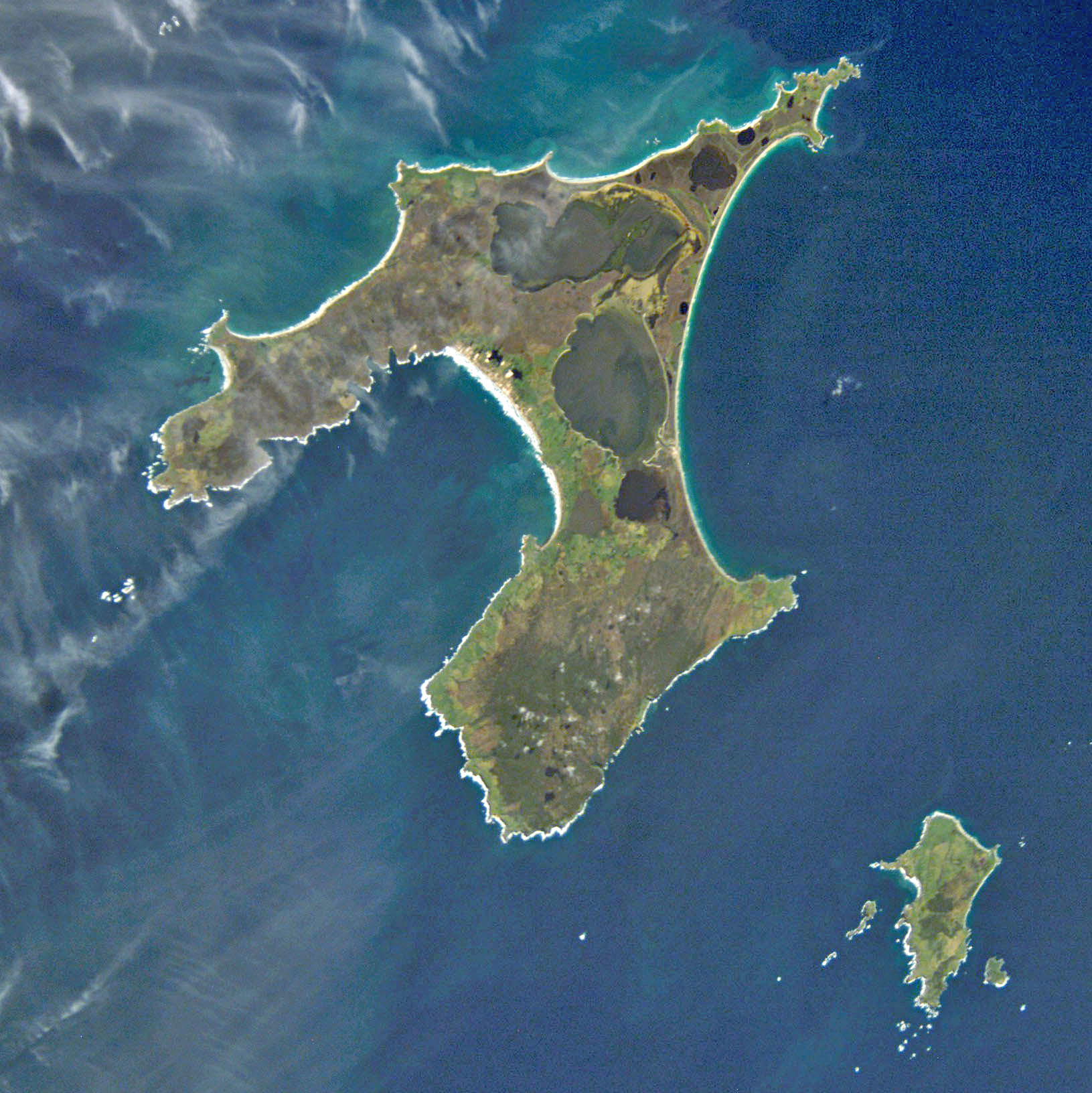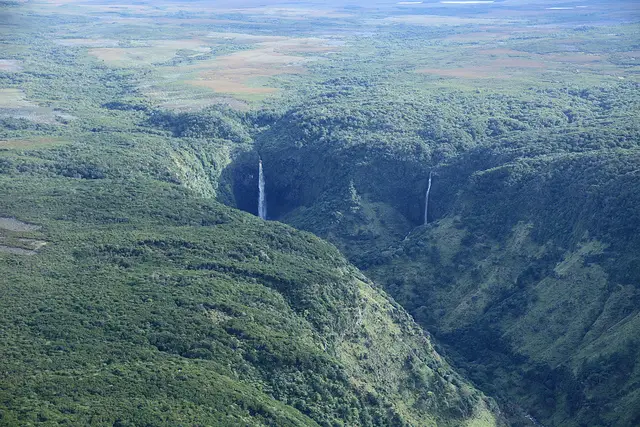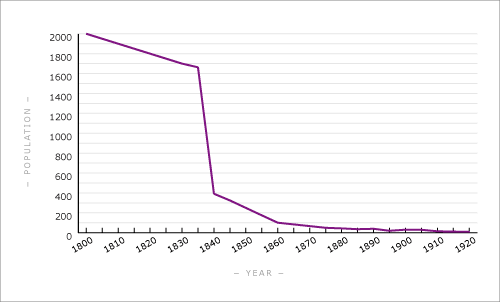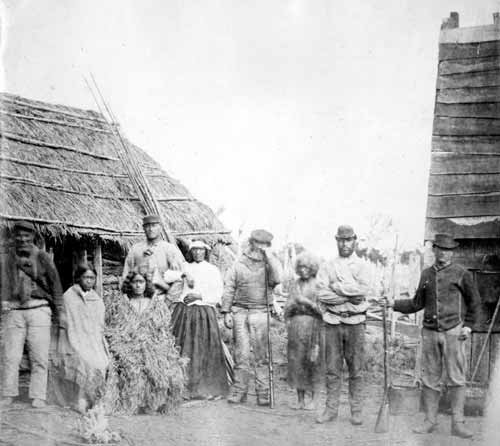EL CURIOSO IMPERTINENTE
Será en Octubre
- Desde
- 17 May 2011
- Mensajes
- 28.667
- Reputación
- 59.461
La historia de los moriori empezó hacia el año 1500, cuando un grupo de maoríes emigró desde Nueva Zelanda hasta las islas Chatham, un archipiélago deshabitado 680 kilómetros al sureste. Estos emigrantes bautizaron su nuevo hogar como Rekohu, que en su lengua quería decir "Sol envuelto en brumas".




El clima del archipiélago, más frío y húmedo que el de Nueva Zelanda (la temperatura máxima no superan los 23,8 º Celsius) hacían impracticable el cultivo de las plantas que traían con ellos, por lo que los moriori tuvieron que buscar urgentemente otras fuentes de alimentos. Por fortuna la encontraron en las vastas colonias de focas y aves marinas, que junto con la pesca les permitieron cubrir con creces sus necesidades. En aquella época la población humana de las islas ascendía a dos mil personas,aproximadamente.





Los moriori eran de origen maorí. Los maoríes son un pueblo guerrero como es bien sabido, cuyas tribus vivían en guerra permanente unas con otras, por los que los primeros años en Rekohu debieron ser terriblemente violentos.
Según la tradición, el cacique Nunuku-whenua trajo la paz promulgando leyes que prohibian el asesinato, el canibalismo y la guerra. Consiguió que dichas leyes fueran aceptadas por toda la población. Gracias a ellas, disfrutaron de trescientos años de tranquilidad, hasta que llegaron los primeros extranjeros.



El 29 de noviembre de 1791, el capitán William Robert Broughton, de la marina real británica, que estaba al mando del bergantín H.M.S. Chatham, descubrió las islas, y las que bautizó con el nombre de su navío. No tardaron en llegar a las islas los primeros balleneros y cazadores de focas europeos y norteamericanos. La competencia con los recién llegados por los recursos y una epidemia de gripe diezmaron la población nativa, que hacia 1835 había quedado reducida a 1600 personas.
Pero fue en aquel año de 1835 cuando los moriori sufrieron un desastre aún mayor del que ya nunca se recuperarían.
El 19 de noviembre de aquel año, quinientos maoríes expulsados de la isla norte de Nueva Zelanda y armados con fusiles, mazas y hachas llegaron a las Chatham a bordo del bergantín 'Lord Rodney'. Lo primero que hicieron fue asesinar a una muchacha de 12 años, descuartizarla y secar su carne al sol. El 5 de diciembre se les sumó un segundo grupo de cuatrocientos individuos.
Sin mayores ceremonias, los invasores tomaron posesión de las islas, haciendo saber a los nativos que a partir de ese estos momento pasaban a ser sus súbditos. A los que no se comían los reducían a esclavitud.
Ante la gravedad de la situación, los ancianos moriori se reunieron en el poblado de Te Awapatik para debatir qué debía hacerse. A pesar de que algunos de los ancianos allí reunidos aconsejaban luchar, dos de los jefes, Tapata y Torea, advirtieron que "la ley de Nunuku no era una estrategia para la supervivencia, que pudiera ser desechada cuando las condiciones cambiaban; se trataba de un imperativo moral". Un superviviento moriori recordaba "los maoríes comenzaron a matarnos como a ovejas... estábamos aterrorizados. Nos escondíamos detrás de los arbustos, cavábamos madrigueras en el suelo... en cualquier lugar con tal de escapar de nuestros enemigos. No sirvió de nada, nos encontraban y nos mataban indiscriminadamente, hombres, mujeres y niños". Un maorí explicó "Tomamos posesión de la tierra...de acuerdo con nuestras costumbres y capturamos a toda la gente. Ni uno solo escapó". Los maoríes clavaban a mujeres y niños a estacas y los dejaban agonizando durante días en la playa. Prohibieron a los moriori hablar su idioma y les obligaron a orinar y defecar en sus lugares sagrados.
También prohibieron a los varones moriori casarse y tener hijos con mujeres de su misma raza. Los supervivientes quedaron reducidos a esclavitud. Las mujeres moriori se convirtieron en concubinas de los maoríes y colonos europeos. En 1863 sólo quedaban 101 moriori. El último moriori de pura estirpe, llamado Tommy Solomon, murió en 1933. Sin embargo quedan varios miles de descendientes de los genocidas maoríes y sus esclavas sensuales moriori.
El último moriori. Curiosamente en las fotos parece encantado de la vida.


En años recientes se dice que en las Chatham y en Nueva Zelanda se está produciendo un "renacimiento" de la cultura moriori, a cargo, supongo, de los descendientes de quienes que los exterminaron.
El hombre es el único animal que tropieza dos veces en la misma piedra.
Chathams embrace peace ethic - National - NZ Herald News



El clima del archipiélago, más frío y húmedo que el de Nueva Zelanda (la temperatura máxima no superan los 23,8 º Celsius) hacían impracticable el cultivo de las plantas que traían con ellos, por lo que los moriori tuvieron que buscar urgentemente otras fuentes de alimentos. Por fortuna la encontraron en las vastas colonias de focas y aves marinas, que junto con la pesca les permitieron cubrir con creces sus necesidades. En aquella época la población humana de las islas ascendía a dos mil personas,aproximadamente.





Los moriori eran de origen maorí. Los maoríes son un pueblo guerrero como es bien sabido, cuyas tribus vivían en guerra permanente unas con otras, por los que los primeros años en Rekohu debieron ser terriblemente violentos.
Según la tradición, el cacique Nunuku-whenua trajo la paz promulgando leyes que prohibian el asesinato, el canibalismo y la guerra. Consiguió que dichas leyes fueran aceptadas por toda la población. Gracias a ellas, disfrutaron de trescientos años de tranquilidad, hasta que llegaron los primeros extranjeros.



El 29 de noviembre de 1791, el capitán William Robert Broughton, de la marina real británica, que estaba al mando del bergantín H.M.S. Chatham, descubrió las islas, y las que bautizó con el nombre de su navío. No tardaron en llegar a las islas los primeros balleneros y cazadores de focas europeos y norteamericanos. La competencia con los recién llegados por los recursos y una epidemia de gripe diezmaron la población nativa, que hacia 1835 había quedado reducida a 1600 personas.
Pero fue en aquel año de 1835 cuando los moriori sufrieron un desastre aún mayor del que ya nunca se recuperarían.
El 19 de noviembre de aquel año, quinientos maoríes expulsados de la isla norte de Nueva Zelanda y armados con fusiles, mazas y hachas llegaron a las Chatham a bordo del bergantín 'Lord Rodney'. Lo primero que hicieron fue asesinar a una muchacha de 12 años, descuartizarla y secar su carne al sol. El 5 de diciembre se les sumó un segundo grupo de cuatrocientos individuos.
Sin mayores ceremonias, los invasores tomaron posesión de las islas, haciendo saber a los nativos que a partir de ese estos momento pasaban a ser sus súbditos. A los que no se comían los reducían a esclavitud.
Ante la gravedad de la situación, los ancianos moriori se reunieron en el poblado de Te Awapatik para debatir qué debía hacerse. A pesar de que algunos de los ancianos allí reunidos aconsejaban luchar, dos de los jefes, Tapata y Torea, advirtieron que "la ley de Nunuku no era una estrategia para la supervivencia, que pudiera ser desechada cuando las condiciones cambiaban; se trataba de un imperativo moral". Un superviviento moriori recordaba "los maoríes comenzaron a matarnos como a ovejas... estábamos aterrorizados. Nos escondíamos detrás de los arbustos, cavábamos madrigueras en el suelo... en cualquier lugar con tal de escapar de nuestros enemigos. No sirvió de nada, nos encontraban y nos mataban indiscriminadamente, hombres, mujeres y niños". Un maorí explicó "Tomamos posesión de la tierra...de acuerdo con nuestras costumbres y capturamos a toda la gente. Ni uno solo escapó". Los maoríes clavaban a mujeres y niños a estacas y los dejaban agonizando durante días en la playa. Prohibieron a los moriori hablar su idioma y les obligaron a orinar y defecar en sus lugares sagrados.
También prohibieron a los varones moriori casarse y tener hijos con mujeres de su misma raza. Los supervivientes quedaron reducidos a esclavitud. Las mujeres moriori se convirtieron en concubinas de los maoríes y colonos europeos. En 1863 sólo quedaban 101 moriori. El último moriori de pura estirpe, llamado Tommy Solomon, murió en 1933. Sin embargo quedan varios miles de descendientes de los genocidas maoríes y sus esclavas sensuales moriori.
El último moriori. Curiosamente en las fotos parece encantado de la vida.


En años recientes se dice que en las Chatham y en Nueva Zelanda se está produciendo un "renacimiento" de la cultura moriori, a cargo, supongo, de los descendientes de quienes que los exterminaron.
El hombre es el único animal que tropieza dos veces en la misma piedra.
Chathams embrace peace ethic - National - NZ Herald News
Chathams embrace peace ethic
By RUTH BERRY
12:07 AM Saturday Jan 22, 2005
Chatham Islands Cultures Indigenous Peoples... Maori
The population of the Chathams doubled yesterday as more than 700 guests gathered for the official opening of the first Moriori marae, which it is hoped may be used as a centre for peace studies.
Dignitaries and Moriori descendants visiting the island - known to Moriori as Rekohu - from as far as London and New York braved gales as they entered the albatross-shaped Kopinga Marae, perched on a barren hilltop overlooking a glittering bay and fringed with white antiestéticathers to mark the blessing ceremony.
At the centre of the five-sided wharenui, or meeting house, stands an enormous potokomanawa, or pole of the heart, on which the names of all Moriori living on the island in 1835 - when it was invaded by Taranaki Maori - have been inscribed.
Standing before the pou, elder Wilfred Davis paid tribute to his great-grandmother, whose name is on the pole and who was taken from the island and forced to live in exile.
Hokotehi Moriori Trust chairman Maui Solomon told the gathering that the Moriori renaissance began in 1980 with the screening of a Barry Saunders television documentary.
It was built on by Michael King's book on Moriori and the Waitangi Tribunal claim that was reported in 2001.
The birth of the $4 million marae heralded a "new beginning not just for Moriori but the Chathams as a whole", he said.
It was hoped the marae would provide a centre for further exploration of Moriori cultural identity and that it could also be used as a centre for peace studies "or perhaps as a place where conflicts can be resolved".
Moriori believe this would be appropriate, as it would reflect the philosophies of their ancestor Nunuku who, 500 years ago, initiated a covenant of peace that allowed Moriori to duel but required them to stop as soon as blood was drawn.
This was last renewed when Taranaki iwi Ngati Tama and Ngati Mutunga invaded and killed many Moriori or consigned them to slavery, decimating their population and resulting in the widespread myth that they were extinct.
"When faced with the greatest challenge to their spiritual belief they did not falter," said Mr Solomon, before turning to the pou: "Your sacrifice wasn't in vain."
Prime Minister Helen Clark told the crowd the peaceful philosophy of thetchakethenu (the people of Rekohu) stood out.
"We acknowledge today the Moriori ancestors and we acknowledge the legacy of peace for which they sacrificed so much."
The Prime Minister said the design of the building was inspired by the ancestors and captured the essence of the Moriori.
Michael King's daughter and son, Rachel and Jonathan, who were among the the guests, presented a picture of their father and his late wife to the marae.
Also present for the ceremonies were the Maori Queen, Dame Te Atairangikaahu, Tuwharetoa paramount chief Tumu te Heuheu, Chief Justice Dame Sian Elias and Maori Party co-leader Tariana Turia.
By RUTH BERRY EmailPrint



